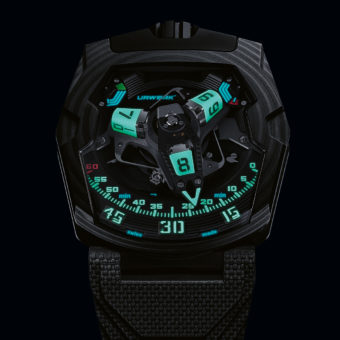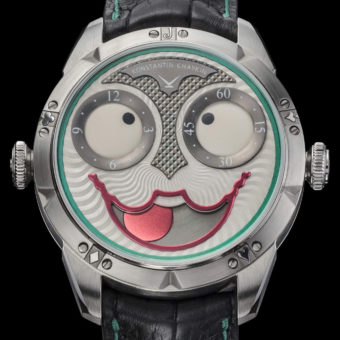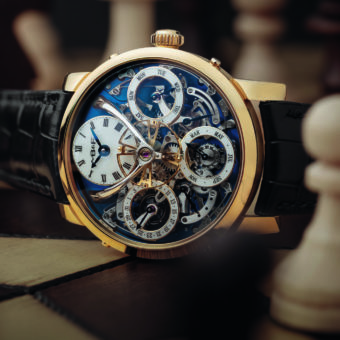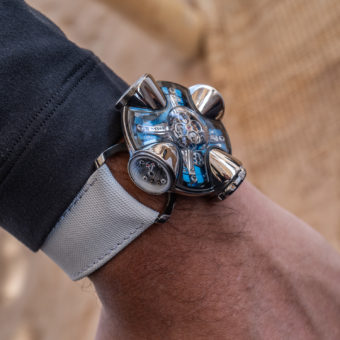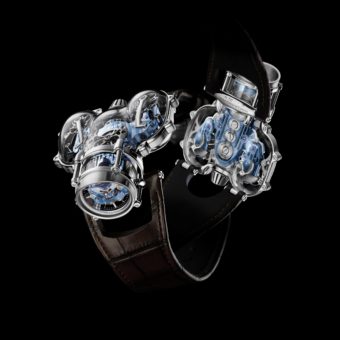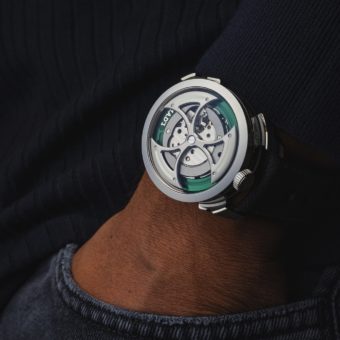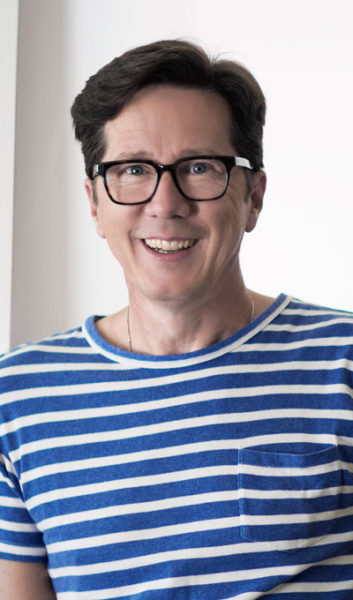 For WatchTime’s Design Special 2018, on sale now and available for download in the WatchTime Shop, we sat down with several different design professionals — including independent industrial designers, freelance watch designers, lead designers of large brands, and even a movement designer — to talk about how they see the role of design in watchmaking, where they get their ideas from, and what they think good design is.
For WatchTime’s Design Special 2018, on sale now and available for download in the WatchTime Shop, we sat down with several different design professionals — including independent industrial designers, freelance watch designers, lead designers of large brands, and even a movement designer — to talk about how they see the role of design in watchmaking, where they get their ideas from, and what they think good design is.
Here are the answers we got from Eric Giroud, product designer and owner of Through the Looking Glass, and a longstanding member of the MB&F team:
“Good design is a consistent watch with a little tension,
beautifully proportioned, original visual codes and good ergonomics.”
WT: In your opinion, what is the role of a designer in the world of watchmaking?
EG: The role is different depending on the watch brand. For example, with some brands a designer is involved in the [original] design and the future vision of the brand. Then there’s the drawing, which is a tool to communicate the ideas and designs; for some brands, the work of the designer is limited to the drawing. For my part, the work of the designer is very broad. It is placed more and more often at the stage of design and research, but I am informed by my career as an architect, where a project is the result of global thinking and not just a pretty drawing.
WT: How did you get into watches and watch design?
EG: I studied music and architecture, but I always knew I wanted to become a designer one day. I worked initially on packaging, and on the design of objects such as lighting, furniture, writing instruments, and telephones. The first watch design project was presented to me in 1997. Since then I focused on that category because I have a special affinity with the object of the watch and the world of watchmaking.
WT: What is good watch design, in your view? Any examples?
EG: Good design is a consistent watch with a little tension, beautifully proportioned, with original visual codes and good ergonomics. There needs to be a slightly mysterious factor that makes the watch desirable for consumers. The Royal Oak from Audemars Piguet is a fine example of good design by its singularity and its very modern look. As far as more contemporary pieces, and without mentioning my own work, Urwerk’s 103 model is revolutionary. In the more classical style, I find the work of François-Paul Journe very coherent and modern.
WT: Where do you get your ideas?
EG: Ideas do not fall from the sky: they must be raised, triggered. There are two main areas regarding this topic. The first is interaction with the various people I work with; the second has to do with my background and my particular curiosities. It’s the mixture of these two factors that are the basis of a good project.
WT: Which watch or other product would you like to see get a makeover?
EG: The list is long! I’d be happy to reconsider the look of some iconic watches created in the years between 1960 and 1970 — models which might benefit from a new point of view in order to give them a contemporary design.
WT: Should form follow function or function follows form? Why?
EG: Form follows function in most watch designs. The round shape is undeniable proof. The exception proves the rule, with some models obviously opting for function to follow form.
WT: What project are you most proud of?
EG: Without hesitation, I’m very happy to participate in the adventure at MB&F, which for 11 years has been a research laboratory in the sense of a different point of view on watchmaking and on how watch design can be approached. Overall, I’m happy to participate in the development and design for as many brands in as many price segments as possible.

